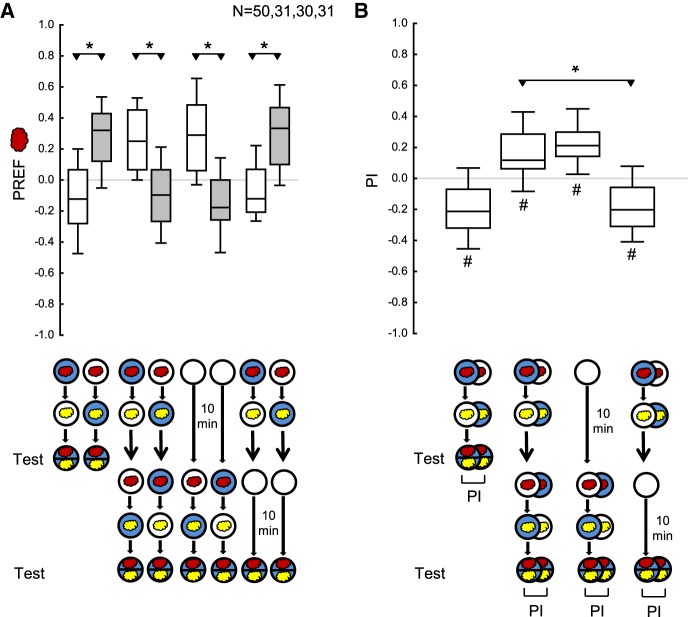Figure 8.
Differential aversive reversal learning paradigm in larval Drosophila. The larvae were trained and tested as in Figure 7, except that BA was used as the second odor (yellow cloud) in all training trials in which n-amyl acetate (red cloud) was not presented. (A) The larvae were tested either (i) immediately after one-phase training, (ii) after training with reversed contingencies in the first and the second training phase, (iii) after omitting the first training phase, or (iv) after omitting the second training phase. Preference scores (PREF) reflect preference for n-amyl acetate (red cloud). (B) PIs calculated from the preference scores in A. Negative and positive PIs indicate aversive memory related to the first and the second training phase, respectively. The PIs after reversed-contingency training were more positive than when the second training phase was omitted, suggesting behavior in accordance with the second training phase. In addition, the PIs after reversed-contingency training were significantly positive, confirming this conclusion. The fact that the PI were significantly negative when the second training phase was omitted suggests behavior in accordance with the first training phase. However, the PIs are no less positive after reversed-contingency training than when the first training phase is omitted, offering no evidence for a behavioral effect of the memory for the first training phase (see also Fig. 9). Sample sizes are given within the figure. * refers to MWU comparisons between groups, # refers to OSS comparisons to chance levels, that is, to zero (*,# P < 0.05 corrected according to Bonferroni-Holm). Other details as in Figures 1–7.

